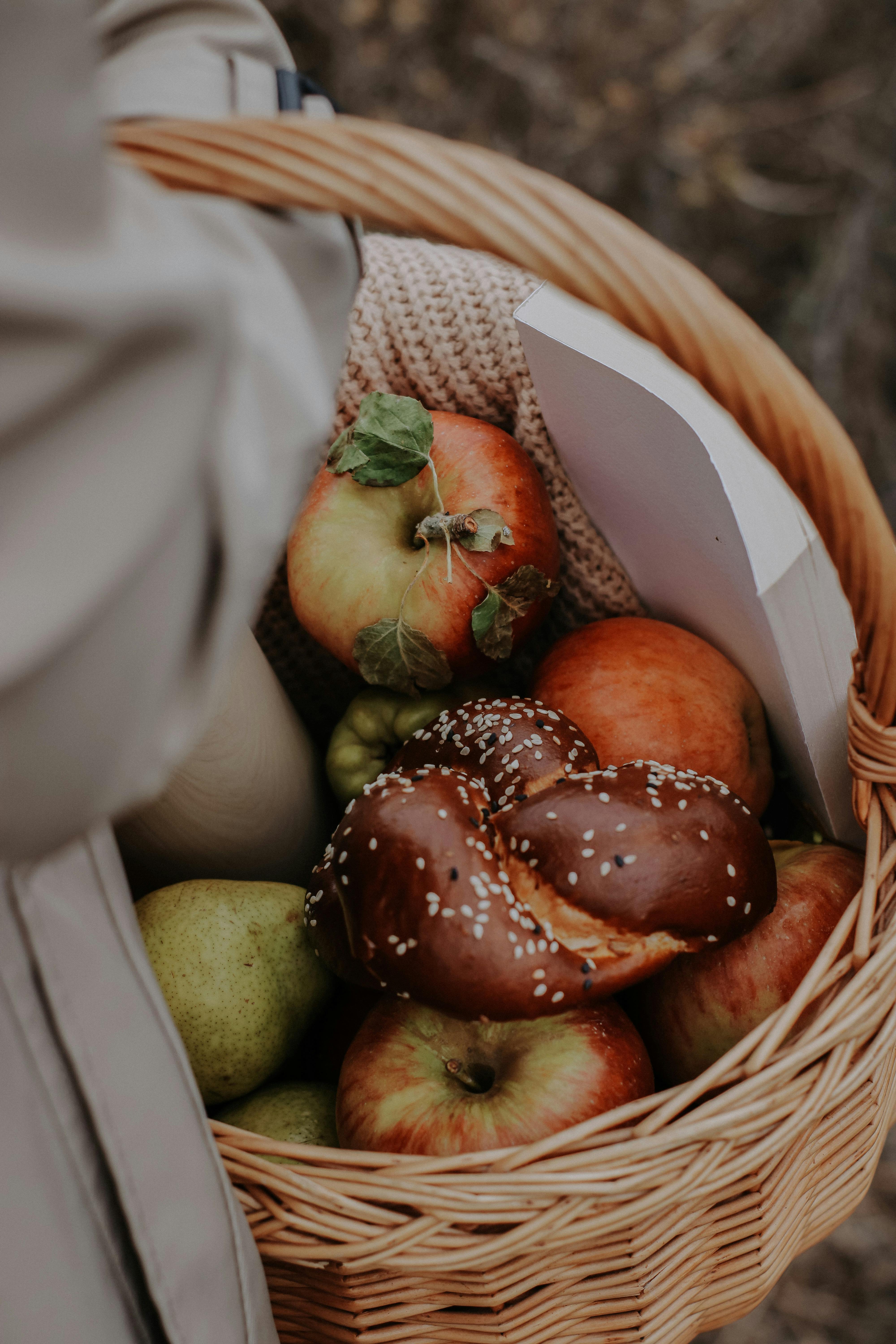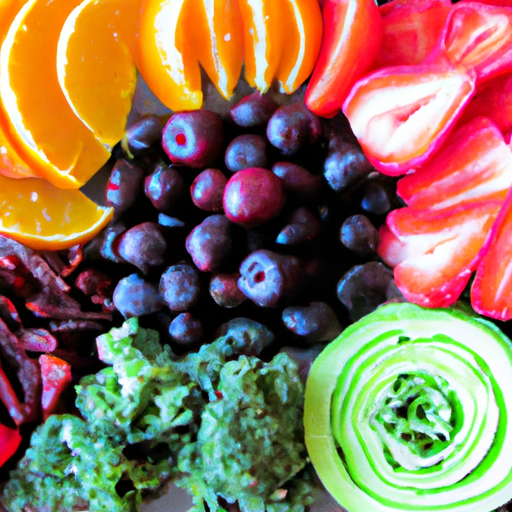Are you looking to shed some pounds while still enjoying delicious meals? Look no further! Tastepan’s collection of nutritious and delicious recipes will help you prioritize your well-being without compromising on flavor. Our meal planning guide for weight loss provides valuable tips, expert advice, and wholesome meal ideas to make healthy eating a breeze. Discover how you can nourish your body and reach your weight loss goals with ease. So, get ready to embark on a tasty and fulfilling journey towards a healthier you!

Understanding Meal Planning
Meal planning is a valuable tool when it comes to achieving your weight loss goals. By carefully planning your meals in advance, you can ensure that you are consuming a nutritious and balanced diet while also staying within your desired calorie range. This not only helps you stay on track with your weight loss journey but also saves you time and money. With meal planning, you have the opportunity to make thoughtful food choices and eliminate impulsive decisions that may hinder your progress.
Importance of Meal Planning for Weight Loss
Meal planning plays a crucial role in weight loss for several reasons. Firstly, it allows you to have control over what you eat and the portion sizes you consume. When you plan your meals ahead of time, you can make healthier choices and avoid last-minute indulgences or temptations. It also helps you avoid the common pitfall of reaching for unhealthy convenience foods when hunger strikes.
Another essential aspect of meal planning is that it helps you stay consistent and accountable to your weight loss goals. By having a clear plan in place, you are less likely to deviate from your dietary intentions. Meal planning also ensures that you are incorporating a variety of nutrient-rich foods into your diet, which is essential for overall health and weight management.
Benefits of Meal Planning
Meal planning offers numerous benefits beyond weight loss. It helps you save time and eliminate the stress of deciding what to cook for each meal. With a well-thought-out plan, you can efficiently prepare and cook your meals, reducing the time spent in the kitchen. Additionally, meal planning allows you to save money by avoiding unnecessary trips to the grocery store and making use of ingredients you already have on hand.
Meal planning also promotes mindfulness and encourages you to prioritize your well-being. It gives you the opportunity to consider your individual dietary needs and preferences, ensuring that you are nourishing your body with wholesome and delicious meals. By sticking to a meal plan, you establish healthy eating habits and can develop a positive relationship with food.
Goal Setting
Before embarking on any weight loss journey, it’s essential to set clear and realistic goals. Determining your weight loss goals will help guide your meal planning efforts and provide you with a sense of direction. Remember that everyone’s weight loss journey is unique, so it’s crucial to set goals that align with your personal circumstances and aspirations.
Determining Weight Loss Goals
When setting weight loss goals, it’s important to consider factors such as your current weight, body composition, and overall health. Set specific and measurable goals that are attainable within a reasonable timeframe. For example, aiming to lose 1-2 pounds per week is considered a healthy and realistic rate of weight loss.
Keep in mind that weight loss is not just about the numbers on the scale. Consider other metrics, such as body measurements or how your clothes fit, to track your progress. Remember to celebrate non-scale victories along the way, such as increased energy levels or improved fitness performance.
Setting Realistic Expectations
While setting goals is important, it’s equally crucial to set realistic expectations for your weight loss journey. Understand that sustainable weight loss takes time and effort. Avoid falling into the trap of fad diets or quick fixes that promise rapid results but often lead to disappointment and regaining the weight.
Instead, focus on making gradual and sustainable changes to your eating habits and physical activity levels. Remember that weight loss is a journey, and it’s normal to encounter obstacles along the way. Be kind to yourself and maintain a positive mindset, knowing that progress is made through small, consistent steps.

Calculating Calorie Needs
To achieve weight loss, it’s essential to understand the concept of calorie needs and the importance of creating a calorie deficit. Calorie needs refer to the number of calories your body requires to maintain its current weight. By creating a calorie deficit, you consume fewer calories than your body needs, leading to weight loss over time.
Understanding Basal Metabolic Rate (BMR)
Your basal metabolic rate (BMR) is the number of calories your body needs to perform basic functions at rest, such as breathing and maintaining body temperature. BMR is influenced by various factors, including age, gender, weight, and muscle mass. Calculating your BMR provides a starting point for determining your calorie needs.
Several online calculators can help you estimate your BMR based on your age, weight, height, and activity level. Keep in mind that this is an estimate, and individual variations may exist. It’s always best to consult with a healthcare professional or registered dietitian for personalized advice.
Determining Calorie Deficit for Weight Loss
Once you have an estimate of your BMR, you can determine your calorie deficit for weight loss. Generally, a safe and sustainable deficit is 500-1000 calories per day, which can lead to a weight loss of 1-2 pounds per week. However, it’s important to remember that creating too large of a deficit can be counterproductive and may negatively impact your metabolism and overall well-being.
To create a calorie deficit, you can either reduce your calorie intake through food choices or increase your physical activity levels, or a combination of both. A balanced approach that incorporates both a healthy diet and regular exercise is typically the most effective for long-term weight loss and maintenance.
Healthy Meal Components
When it comes to meal planning for weight loss, incorporating healthy meal components is key. By focusing on balanced macronutrients, fiber-rich foods, lean proteins, fruits, and vegetables, you can create satisfying and nutritious meals that support your weight loss goals.
Balanced Macronutrients
A balanced meal includes a combination of carbohydrates, proteins, and fats. Carbohydrates provide energy, proteins help with muscle repair and growth, and fats are essential for various bodily functions. When planning your meals, aim for a balance of these macronutrients to ensure satiety and overall well-being.
Include whole grains, such as quinoa or brown rice, as your source of carbohydrates. Opt for lean proteins like chicken breast, fish, legumes, or tofu. Incorporate healthy fats from sources such as avocados, nuts, and olive oil. Finding the right balance of macronutrients will help you feel satisfied and fuel your body properly.
Fiber-Rich Foods for Satiety
Fiber is an important component of a healthy meal plan, as it aids in digestion, promotes satiety, and helps regulate blood sugar levels. Including fiber-rich foods in your meals can help you feel fuller for longer and reduce the urge to snack between meals.
Incorporate whole grains, such as oats or whole wheat bread, into your diet. Include plenty of fruits and vegetables, as they are excellent sources of fiber. Legumes, nuts, and seeds are also great additions to increase your fiber intake. Remember to drink an adequate amount of water to help the fiber move through your digestive system smoothly.
Incorporating Lean Proteins
Protein is a crucial nutrient for weight loss, as it helps build and repair tissues, supports muscle growth, and promotes satiety. Including lean proteins in your meals can help you feel fuller and reduce cravings, making it easier to stick to your calorie goals.
Choose lean protein sources, such as skinless chicken or turkey breast, fish, eggs, or low-fat dairy products. Plant-based sources like tofu, tempeh, quinoa, or legumes are excellent options for individuals following a vegetarian or vegan diet. Aim to include protein in each of your meals to help maintain muscle mass and support your weight loss efforts.
Including Fruits and Vegetables
Fruits and vegetables are essential components of a healthy meal plan for weight loss. They are low in calories and high in vitamins, minerals, and antioxidants, making them excellent choices for overall health and weight management.
Make it a goal to include a variety of fruits and vegetables in your meals. Opt for colorful options, as different colors indicate different nutrient profiles. Incorporate leafy greens, berries, citrus fruits, cruciferous vegetables, and other seasonal produce to maximize your nutrient intake. These natural foods not only add flavor and vibrancy to your meals but also provide essential nutrients for your body.

Meal Planning Techniques
Once you have a good understanding of the key components of a healthy meal, it’s time to explore different meal planning techniques that can streamline your efforts and make the process more efficient.
Batch Cooking and Meal Prepping
Batch cooking and meal prepping are effective strategies to save time and ensure you always have healthy meals readily available. Dedicate a specific time each week to prepare larger quantities of staple ingredients, such as grains, proteins, and vegetables. You can then combine these ingredients in various ways throughout the week to create delicious and balanced meals.
Invest in meal prep containers to portion out meals in advance, making it easy to grab and go when you’re in a hurry. This technique not only saves time but also helps control portion sizes and prevents unhealthy food choices during busy moments.
Portion Control Strategies
Portion control is a crucial aspect of successful weight loss. Even when consuming nutritious foods, overeating can hinder your progress. Using portion control strategies can help you maintain a balanced and calorie-conscious meal plan.
One effective technique is using smaller plates and bowls to create a visual illusion of a fuller plate. Start by filling half of your plate with vegetables, a quarter with lean protein, and the remaining quarter with whole grains or starchy vegetables. This method ensures a well-balanced meal and prevents overeating.
Using Meal Planning Apps
Meal planning apps are a convenient tool to help you stay organized and inspired throughout your weight loss journey. These apps provide recipe recommendations, allow you to create shopping lists, and even offer customizable meal plans based on your preferences and dietary restrictions.
Explore different meal planning apps and find one that suits your needs and preferences. Experiment with different recipes, track your progress, and stay motivated by trying new meals and flavors.
Creating a Weekly Meal Plan
Now that you’re familiar with the various techniques and components of meal planning, it’s time to put it all together and create a comprehensive weekly meal plan.
Planning Meals for the Week
Start by thinking about your schedule for the upcoming week. Consider any social events, work commitments, or family obligations that may impact your meal choices. Aim to include a balance of different cuisines, flavors, and cooking methods to keep your meals interesting and enjoyable.
Designate specific days for batch cooking or meal prepping, and schedule meals accordingly. Choose recipes that use similar ingredients to optimize your grocery shopping and minimize food waste. Take into account any dietary restrictions or personal preferences when selecting recipes to ensure that your meal plan suits your individual needs.
Designing a Shopping List
Once you have your weekly meal plan in place, create a detailed shopping list to ensure you have all the necessary ingredients on hand. Take inventory of your pantry and fridge to identify any items you already have and only purchase what you need.
Organize your shopping list according to different sections of the grocery store, such as produce, protein, dairy, and pantry staples. This will streamline your shopping experience and prevent you from forgetting essential items. Try to stick to the perimeter of the store, where fresh and whole foods are typically found, to support your weight loss goals.
Incorporating Variety and Flavors
To prevent monotony and maintain your motivation, it’s crucial to incorporate variety and flavors into your weekly meal plan. Experiment with different cuisines, spices, and cooking techniques to keep things interesting and enjoyable.
Include a mix of old favorite recipes and new ones you want to try. Consider incorporating seasonal produce to take advantage of their freshness and nutritional benefits. Rotate protein sources and experiment with plant-based meals for added variety.
Remember that meal planning is a flexible tool that allows for adjustments and modifications based on your preferences and needs. Listen to your body and make changes as necessary to ensure you’re nourishing yourself properly.
Quick and Easy Meal Ideas
Busy schedules and time constraints are common challenges when it comes to meal planning for weight loss. However, there are plenty of quick and easy meal ideas that can be prepared in no time without compromising nutrition or flavor.
15-Minute Meal Options
When time is limited, opt for simple yet nutritious meals that can be whipped up in just 15 minutes. Consider options like stir-fries, salads with pre-grilled chicken or tofu, or whole wheat wraps filled with lean proteins and fresh vegetables.
Use your meal prepped ingredients to assemble quick and healthy meals. Keep basic staples like canned beans, frozen vegetables, or pre-cooked quinoa on hand for speedy and nutritious meals.
One-Pot Recipes for Convenience
One-pot recipes are a lifesaver when it comes to quick and easy meal preparation. These recipes involve combining all the ingredients in a single pot or skillet, minimizing cleanup and saving time.
Try recipes like vegetable-packed soups, hearty stews, or stir-fries that can be cooked in one pot or skillet. These meals are not only convenient but also allow flavors to meld together, resulting in delicious and satisfying dishes.
Sheet Pan Dinners for Minimal Cleanup
Sheet pan dinners are another time-saving option that requires minimal cleanup. These meals involve roasting all the ingredients on a single sheet pan, eliminating the need for multiple pots and pans.
Prepare a variety of protein, such as chicken or fish, alongside a selection of vegetables like broccoli, bell peppers, or sweet potatoes, on a sheet pan. Add your favorite seasonings, drizzle with olive oil, and roast in the oven for a delicious and hassle-free meal.
Healthy Snack Options
Snacking can often make or break weight loss efforts. However, choosing nutrient-dense snacks can help you stay satisfied between meals and prevent overeating.
Choosing Nutrient-Dense Snacks
When selecting snacks, aim for options that are high in nutrients and low in empty calories. Avoid highly processed snacks that are usually high in added sugars, unhealthy fats, and sodium.
Opt for whole foods like fresh fruits and vegetables, Greek yogurt, nuts, seeds, or homemade energy bars. These snacks provide essential vitamins, minerals, fiber, and healthy fats that contribute to overall well-being.
Snack Ideas for Weight Loss
Consider incorporating these healthy snack ideas into your meal plan:
- Apple slices with a tablespoon of nut butter
- Carrot sticks with hummus
- Greek yogurt with fresh berries and a sprinkle of granola
- Homemade trail mix with unsalted nuts, dried fruit, and dark chocolate
- Hard-boiled eggs
- Air-popped popcorn seasoned with herbs and spices
Experiment with different combinations, flavors, and textures to find snacks that satisfy your cravings while supporting your weight loss goals.
Recipe Recommendations
To make meal planning even easier, here are some recipe recommendations that are perfect for weight loss:
Breakfast Recipes for Weight Loss
- Veggie Omelet: Whip up a protein-packed breakfast with sautéed vegetables like spinach, bell peppers, and onions folded into fluffy eggs.
- Overnight Chia Pudding: Combine chia seeds, almond milk, and a touch of sweetener. Let it sit overnight in the fridge, then top with berries and nuts for a filling and nutritious breakfast.
- Whole Wheat Pancakes: Swap traditional pancakes for whole wheat versions topped with fresh fruit and a drizzle of honey or maple syrup.
Lunch and Dinner Ideas
- Grilled Chicken Salad: Grilled chicken breast served over a bed of mixed greens, cherry tomatoes, cucumber, and a light vinaigrette dressing.
- Quinoa Stuffed Bell Peppers: Roasted bell peppers filled with cooked quinoa, lean ground turkey, black beans, and spices, then topped with a sprinkle of cheese and baked until golden.
- Salmon with Roasted Vegetables: Baked salmon seasoned with herbs and served with roasted vegetables like Brussels sprouts, carrots, and sweet potatoes.
Healthy Dessert Options
- Fruit Parfait: Layer Greek yogurt, mixed berries, and a sprinkle of granola for a refreshing and protein-packed dessert.
- Banana Nice Cream: Blend frozen bananas until creamy for a guilt-free and naturally sweet alternative to traditional ice cream.
- Dark Chocolate Energy Bites: Combine dates, nuts, cocoa powder, and a touch of honey in a food processor. Roll into bite-sized balls for a delicious and nutritious sweet treat.
Maintaining Long-Term Success
Achieving weight loss is just the first step. To maintain long-term success, it’s important to stay consistent with your meal planning efforts and make necessary adjustments along the way.
Staying Consistent with Meal Planning
Consistency is key when it comes to maintaining weight loss. Make meal planning a habit by dedicating a specific day each week to plan and prepare your meals. Use your grocery shopping day as an opportunity to stock up on nutritious foods and ingredients.
Find a system that works best for you, whether it’s using a physical planner, a digital app, or a combination of both. Stick to your meal plan as much as possible but allow for flexibility and occasional indulgences. The key is to stay focused and committed to your overall well-being.
Adjusting Portions and Calorie Intake
As you progress on your weight loss journey, it’s important to regularly assess your portion sizes and calorie intake. Your metabolic needs may change over time, especially if you experience weight loss or an increase in physical activity.
Listen to your body’s hunger and fullness cues and adjust your portion sizes accordingly. Be mindful of portion distortion and avoid mindless eating. Consider consulting with a registered dietitian to reassess your calorie needs and make necessary adjustments to ensure continued progress.
Seeking Professional Guidance and Support
If you find yourself struggling or need additional support throughout your weight loss journey, don’t hesitate to seek professional guidance. Registered dietitians or nutritionists can provide personalized advice, meal plans, and strategies to help you reach your goals sustainably.
Additionally, consider joining supportive communities or seeking accountability partners who share similar goals. Surrounding yourself with like-minded individuals can provide encouragement, motivation, and valuable insights.
Remember, achieving and maintaining weight loss is a marathon, not a sprint. Be patient with yourself, celebrate your progress, and focus on overall well-being rather than solely a number on the scale. With mindful meal planning and a commitment to a healthy lifestyle, long-term success is within reach.

